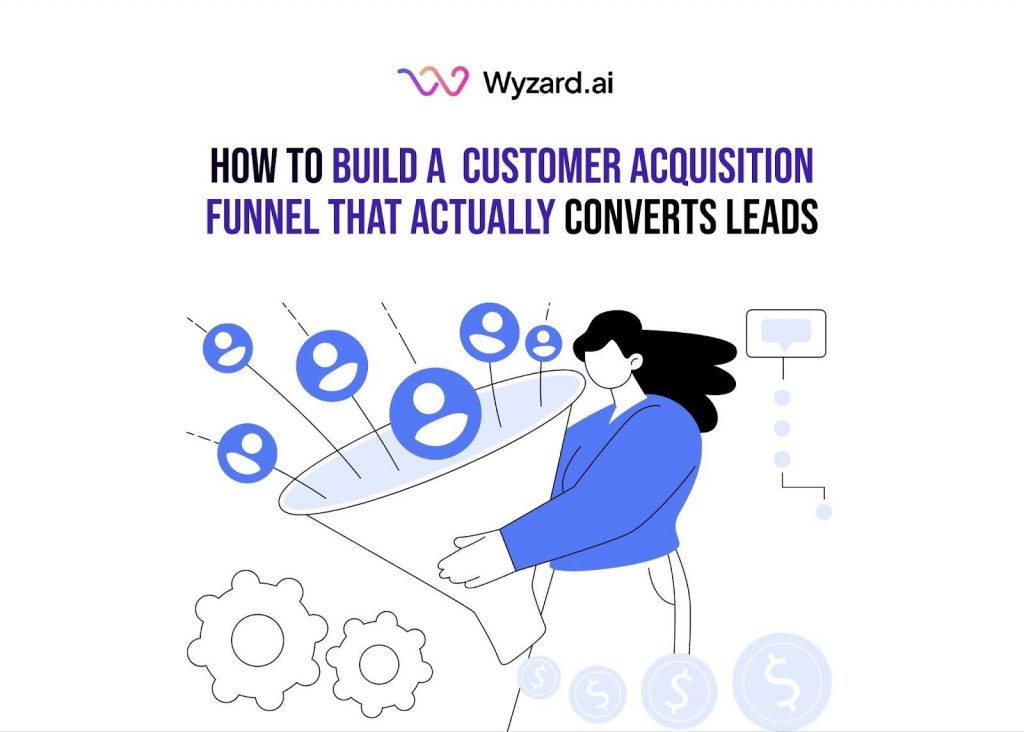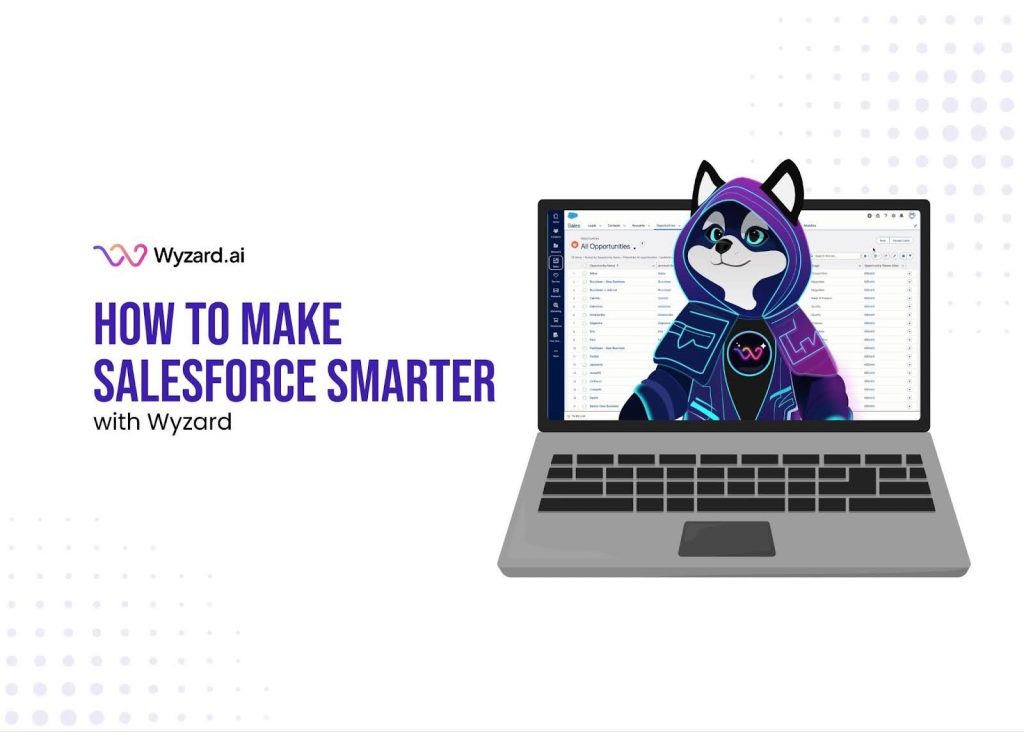You're generating traffic. Leads are visiting your website. But conversions? They're barely moving the needle. The problem isn't your ...
6 Ways AI Lead Qualification Will Outrank Manual Sales Workflows in 2026


Subscribe Now
Manual lead qualification takes 2-3 hours per prospect. Your sales team scores leads based on company size and job titles, yet only 15% of qualified leads actually convert. The problem isn’t your team, it’s the process itself.
AI lead qualification changes the game entirely. Instead of manual research and static scoring, intelligent systems analyze behavioral signals in real-time, identifying high-intent prospects within minutes while achieving 40-60% conversion accuracy.
Here are the six specific ways AI lead qualification outranks manual sales workflows in 2026.
1. Real-Time Scoring vs. Weekly Updates
Manual sales workflows update lead scores weekly or monthly at best. Your team reviews spreadsheets, adjusts point values, and redistributes leads based on outdated information. By the time a lead gets scored as “hot,” they’ve already moved on.
AI lead qualification scores prospects continuously in real-time. The moment a prospect visits your pricing page after downloading a case study, their score updates instantly. When someone forwards your email to three colleagues, the system recognizes that buying committee signal immediately.
This real-time capability means your sales team contacts prospects at peak interest, not days later when they’re evaluating competitors. Speed matters in B2B lead management. The first company to respond to buying signals converts 50% more often than those who wait even a few hours.
Traditional scoring operates on snapshots. AI operates on live data streams. The difference in response time directly impacts your win rate.
2. 50+ Data Points vs. 5-10 Static Factors
Manual lead qualification relies on basic demographic criteria: company size, industry, job title, location, and revenue. You assign point values to each factor and hope these attributes predict buying readiness. They rarely do.
AI lead qualification analyzes 50+ dynamic signals simultaneously across multiple channels:
Behavioral Signals:
- Website visit frequency and page depth
- Pricing page views and duration
- Content download patterns
- Email open rates and link clicks
- Demo request timing
- Return visit patterns
Engagement Signals:
- Webinar attendance and participation
- Question quality during events
- Social media interactions
- Email forwarding to colleagues
- Multi-device access patterns
- Peak activity timeframes
Intent Signals:
- Competitor research activity
- Comparison of content consumption
- Technical documentation access
- Integration page visits
- Case study focus areas
- Feature-specific inquiries
Manual processes can’t track this volume of data points. Automated sales workflows process these signals continuously, identifying patterns that actually correlate with purchases rather than guessing based on demographics.
| Qualification Method | Data Points Analyzed | Update Frequency | Accuracy Rate |
| Manual Sales Workflows | 5-10 static factors | Weekly/Monthly | 15-25% |
| AI Lead Qualification | 50+ dynamic signals | Real-time | 40-60% |
3. Pattern Recognition vs. Gut Instinct
Your best sales rep has instincts developed over the years. They can sense when a prospect is ready to buy based on conversation tone and question quality. But instinct doesn’t scale, and different reps have different accuracy levels.
AI lead qualification learns from thousands of successful conversions to identify reproducible patterns. The system correlates specific signal combinations with actual purchases, discovering behaviors that predict buying readiness.
AI lead nurturing systems might identify that prospects who visit pricing pages 3-4 times over two weeks, download at least one case study, and attend a webinar convert at 65%. Manual qualification would miss this precise pattern entirely.
The machine learning models continuously refine themselves. When certain behavioral combinations lead to conversions, the algorithm strengthens those patterns. When signals fail to predict purchases, the system adjusts automatically. Your qualification criteria evolve based on what actually works in your market, not assumptions.
This pattern recognition extends to negative signals, too. If prospects suddenly stop engaging after showing high intent, AI agents for website visitor behavior analysis flag the disengagement pattern immediately, alerting your team to re-engage before the opportunity is completely lost.
4. Infinite Scalability vs. Headcount Limits
Manual lead qualification creates a hard capacity ceiling. Each sales rep can research and qualify about 20-30 leads daily, maximum. Want to double lead volume? You need to double the headcount, an expensive, slow solution.
AI leads qualification processes with unlimited volume at a consistent speed and accuracy. The same system handling 500 leads monthly can process 5,000 or 50,000 leads without degradation in quality or response time. Your marginal cost per additional qualified lead approaches zero.
Scaling through hiring also introduces consistency problems. Your top performer converts qualified leads at 35%. Your newest hire converts at 12%. Each additional team member brings different judgment and standards. Maintaining consistency becomes nearly impossible as teams grow.
AI agent orchestration frameworks apply identical qualification standards to every prospect automatically. Whether you’re processing your 10th lead or your 10,000th lead this month, each receives the same comprehensive analysis based on proven conversion patterns.
This scalability enables aggressive growth without operational bottlenecks. You can test new marketing channels, enter additional markets, and increase campaign spend, knowing qualification capacity won’t limit your expansion.
5. Multi-Channel Correlation vs. Isolated Evaluation
Manual sales workflows evaluate leads in isolation. A rep reviews one prospect’s profile, assigns a score based on visible data, then moves to the next prospect. They miss critical context that only appears when analyzing behavior across channels and time.
AI lead qualification excels at connecting signals across disconnected systems:
A prospect downloads your whitepaper (marketing automation system), visits your pricing page twice (website analytics), forwards your comparison email to colleagues (email platform), asks technical questions on LinkedIn (social media), and registers for your webinar (event platform). Each system shows one piece of behavior. None reveals the complete picture.
Automated sales workflows recognize these as one cohesive buying journey. The system correlates activities across channels to identify prospects actively building a business case for purchase, behavior that strongly predicts conversion.
This multi-signal intelligence catches patterns invisible to manual qualification:
- Multiple stakeholders from the same company are showing interest (buying committee formation)
- Progression from awareness content to technical documentation (evaluation stage advancement)
- Increased engagement frequency over time (momentum building toward a decision)
- Cross-device access patterns (sharing information with team members)
B2B lead management requires connecting dots across 10-15 different tools and platforms. Manual processes can’t achieve this correlation at scale. AI does it automatically for every prospect simultaneously.
6. Continuous Learning vs. Static Criteria
Manual lead qualification operates on fixed rules. You set scoring criteria based on assumptions: “Companies with over 500 employees get 10 points. Director-level titles get 5 points.” These rules stay constant until someone manually updates them, which happens rarely because it requires analysis of conversion data that most teams don’t have time to perform.
AI lead qualification improves automatically through continuous learning. Every qualified lead that converts strengthens the algorithm’s understanding of effective patterns. Every qualified lead that doesn’t convert teaches the system to adjust its criteria.
This learning happens across multiple dimensions:
Market Evolution: As buyer behavior changes, AI adapts qualification criteria automatically. If prospects start researching mobile capabilities more before purchasing, the system weights mobile-related content engagement higher without manual intervention.
Seasonal Patterns: The technology identifies when certain signals matter more during specific timeframes. Budget cycles, industry events, or fiscal year timing might change, which behaviors predict conversions, and AI lead nurturing systems adjust accordingly.
Segment Differences: AI discovers that different prospect segments show distinct buying patterns. Enterprise leads might require longer evaluation periods with more stakeholder involvement, while mid-market prospects convert faster with fewer touchpoints. The system applies appropriate qualification standards to each segment automatically.
Channel Performance: As you test new marketing channels, AI immediately begins analyzing whether leads from those sources behave differently and adjusts qualification criteria based on actual conversion performance rather than assumptions.
Manual processes stay frozen in time. AI qualification becomes more accurate every week as it processes more data and learns from more outcomes. The accuracy gap between manual and automated approaches widens continuously over time.
FAQs
Q1. How does AI lead qualification improve accuracy compared to manual scoring?
AI lead qualification achieves 40-60% accuracy by analyzing 50+ behavioral signals in real-time rather than 5-10 static demographic factors. The system learns from thousands of actual conversions to identify patterns that predict buying readiness, while manual scoring relies on assumptions about what makes a qualified lead.
Q2. What’s the time difference between AI and manual lead qualification?
Manual lead qualification takes 2-3 hours per prospect for research and scoring. AI lead qualification completes the same process in 2-3 minutes by automatically gathering data from multiple sources and applying learned patterns. This 60x speed improvement enables same-day response to high-intent prospects.
Q3. Can AI lead qualification scale without adding sales headcount?
Yes. Manual qualification capacity tops out at 20-30 leads per rep daily. AI lead qualification handles unlimited volume at consistent quality; the same system processing 500 monthly leads can process 5,000 or 50,000 leads without additional resources or degradation in accuracy.
Q4. How does AI lead qualification handle multiple buying signals?
AI lead qualification correlates signals across disconnected channels automatically. The system connects website visits, email engagement, content downloads, social interactions, and event participation into one comprehensive profile, revealing buying patterns that manual processes miss by evaluating prospects in isolation.
Q5. Does AI lead qualification replace sales development representatives?
No. AI lead qualification automates research and scoring, but doesn’t replace human relationship building. SDRs shift from manual data gathering to strategic conversations with qualified prospects. The technology eliminates busywork while enabling reps to focus on activities that require human expertise.
Q6. How quickly does AI lead qualification show ROI?
Most organizations see improvements within 30-60 days through faster response times and better prioritization. Full ROI typically occurs within 3-6 months as models learn and accuracy improves. Organizations report 200-400% ROI within the first year through higher conversion rates and shorter sales cycles.
Other blogs
The latest industry news, interviews, technologies, and resources.
How to Make Salesforce Smarter with Wyzard.ai
Your CRM is packed with contacts, but how many buying signals are you missing right now? A prospect just ...

Unlock Real-Time HubSpot Automation with Wyzard.ai
Your HubSpot portal holds valuable data about every lead, deal, and customer interaction. But if you're waiting hours, or ...

 We’ve secured funding to power Signal-to-Revenue AI to GTM teams globally. →
We’ve secured funding to power Signal-to-Revenue AI to GTM teams globally. →


